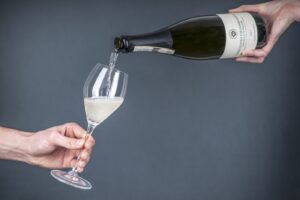The start of the new year is the right occasion, at least according to the press office for Italy’s Minister of Agriculture Luca Zaia, to offer a sort of balance for the period from May to December 2008 of works completed by the Agriculture Ministry for the various sectors under its competency (viticulture, fishing, tobacco, milk and dairy, olive growing, etc.)
Below, is a list of the main measures that have been adopted for the wine sector:
On September 25, Minister Zaia signed a decree that allowed for the cessation of the effects of the ministerial decree of 11 February 2008 in reference to the transitory norms for the use of the grape varietal “Tocai Friulano” and the synonymous “Friulano”. This measure was created after a sentence from the EU Justice Court on June 12 that sanctioned the illegitimacy of the use of the term Tocai for wines produced in Italy. Therefore, in Italy, the Tocai Friulano denomination will no longer be sold and only the denomination “Friulano” for wines produced in Friuli Venezia Giulia and “Tai” for those produced in the Veneto Region can be used.
In September 2007, Italy’s Finance Police computed their first checks and the confiscation of Brunello di Montalcino denomination wines with the suspicion that the prestigious wine was being produced in a way that did not conform to the denomination’s disciplinary – an investigation into the accusation of food production fraud. 93 citations were made involving 13 different winemaking companies. According to what was revealed from this investigation, grape varietals that are not allowed in Brunello production had been planted in the Brunello region. The Brunello Consortium itself admitted that they had discovered 17 hectares of land (equal to 1% of all land controlled) that did not conform to the disciplinary. Due to these investigations, in May 2008 the United States threatened to block imports of Brunello di Montalcino. After diplomatic initiatives by Minister Zaia together with the Italian Embassy in Washington, on May 22 the U.S. decided to withdraw the import ban. A few days later, the Minister met with his American equivalent, Ed Shafer. Together, they gave the go-ahead for the creation of a bilateral technical group that would foresee immediate operative solutions to the problems that had arisen.
Zaia also presented a private plan to his counterpart that was a sort of guarantee for consumers on the U.S. and world market. On June 9, Zaia created a Guarantee Committee to coordinate and oversee control activities for the production of Brunello di Montalcino wines. The decree, which is the first of its kind for relations between a government minister and a food consortium, also named the members of the committee: Riccardo Ricci Curbastro, president of Federdoc, the federation that unites all of the Italian wine consortiums; Vasco Boatto, professor of Agrarian Economics at the University of Padua and director of the course in enology at Conegliano Veneto; Fulvio Mattivi, head of the analysis laboratory at the Istituto di San Michele all’Adige, in the province of Trento. They were entrusted with the role of verifying the adherence to production rules and, whenever the committee should discover a non-correspondence or problems related specifically to production, it must make a proposal to the Minister and competent authorities to intervene. On July 3, Minister Zaia met with U.S. Ambassador to Italy Ronald P. Spogli in Montalcino to close the Brunello di Montalcino issue. The Minister presented the decree that would allow for the reinforcement of control systems with the use of a peripheral office in Florence to be used as the Central Inspectorate for the Quality Control (ICQ) of food products that would then have the capacity to release a declaration of conformity of wines with the Brunello di Montalcino DOCG disciplinary. It will now also be the job of the ICQ to verify the traceability of wine destined for the U.S. market.
The Financial Police confiscated numerous bottles of Vino Nobile di Montepulciano and on August 14, Zaia was already at work to avoid the ban on imports announced by the U.S. Alcohol and Tobacco Tax and Trade Bureau. On August 19, Zaia communicated to the Procura of the Republic of Montepulciano, informing even the U.S. Treasury Department and the U.S. Embassy in Rome in order to let them “know all information that can be revealed, in order to transmit to the American authorities that which they requested and, more precisely, to the offices of the Alcohol and Tobacco Tax and Trade Department of the U.S. Treasury”.
On October 29, Zaia announced that the exportation ban to the U.S. had been avoided and that the American authorities had asked uniform indications to be given to Italian suppliers on the labelling models that must be presented for export.
On October 2, the five-year program to support the Wine OCM, with the creation of Reg. n. 479/08 of 6 June 2008 and the applicative regulation of Commission n. 555/2008, was approved without receiving from the European Commission any contradictory observations in its regard. The plan, made available by the competent office of the general direction for the creation of EU and international politics and sent to the EU Commission within the determined deadline of 30 June 2008, is to be considered operative. Italy was one of the few countries among the big EU wine producing countries that presented the completed program within the deadline and which did not receive contradictory observations within the three month period that had been reserved by the EU Commission to formulate any doubts they may have towards proposed plans.
The Italian plan foresees, for 2009, a sanctioning of 238,223,000 euros; for 2010 resources equal to 298,263,000 euros; 2011 will receive 294,135,000 euros; 341,174,000 euros for 2014. These resources will be destined to financing the main measures contained within the program which are the following:
a) during the first year of application, also considering the restriction of time and the limited financial resources, measures that have already been consolidated will be given privilege, like
- restructuring and re-conversion of vineyards
- distillation of sub-products
-aid for musts
- aid for distillation production
b) for promotion during the first year, a very limited amount of funds have been set aside, equal to about seven million euros, of which 4.9 million will be attributed to the regional governments and the rest at a more central level.
For the application of measures that are already in the plan, the following have already been undertaken: the ministerial decree of 8 August 2008 relative to the restructuring and re-conversion of vineyards, and the ministerial decree of 27 November 2008 relative to the distillation of winemaking sub-products. The decree that would allow the concession of aid for distilling wines to create alcohol is also in the process of being accepted. On 4 August 2008, the Ministry authorized the use of alternative packaging other than glass for some DOC wines. From this possibility, however, DOC wines from sub-zones, “riserva”, “superiore”, “vigna” have been excluded. The same decree foresees a simplified procedure for the modification of wine disciplinaries in a way that would allow interested producers to quickly exploit these new opportunities.
Copyright © 2000/2026
Contatti: info@winenews.it
Seguici anche su Twitter: @WineNewsIt
Seguici anche su Facebook: @winenewsit
Questo articolo è tratto dall'archivio di WineNews - Tutti i diritti riservati - Copyright © 2000/2026








































































































































































































